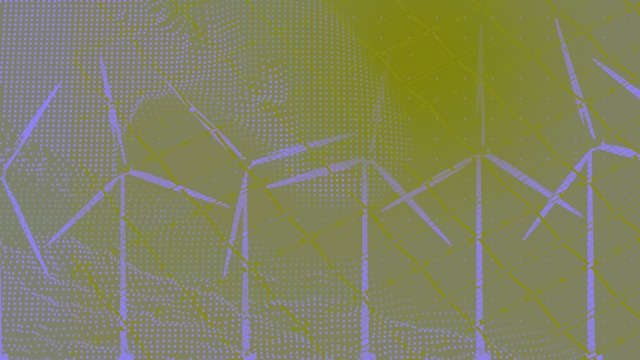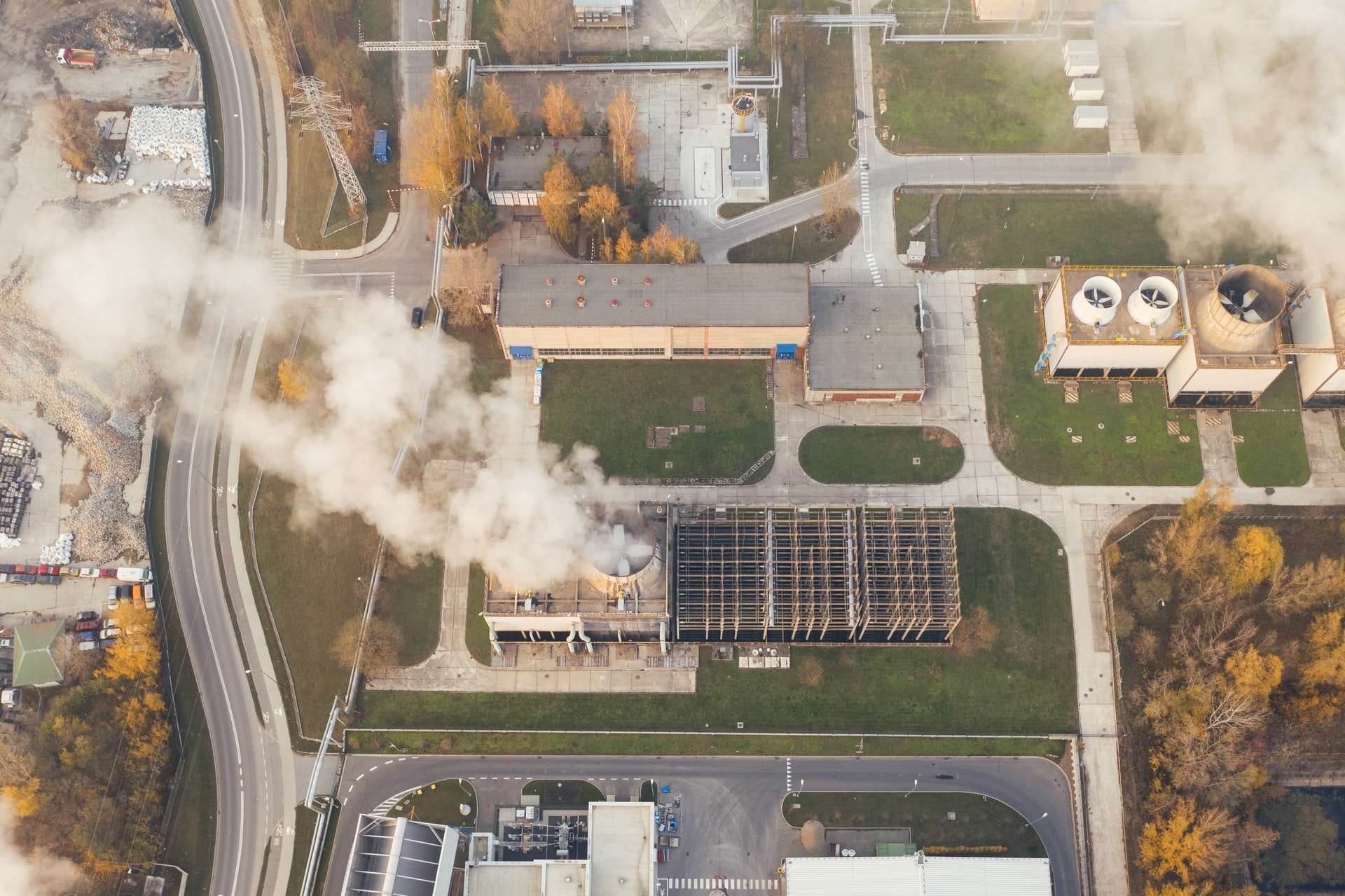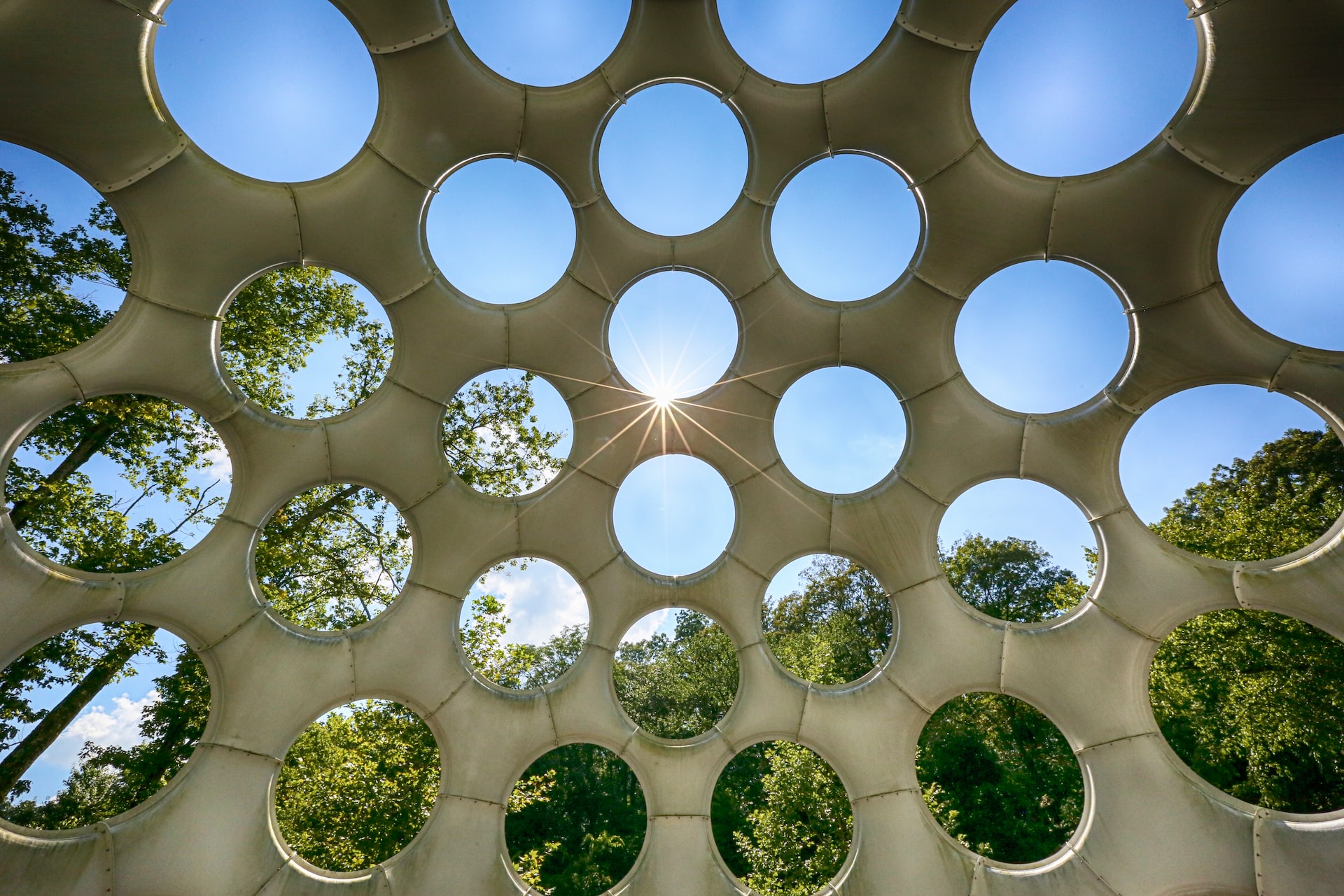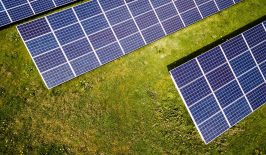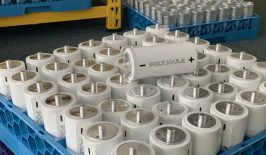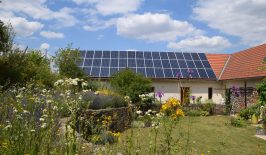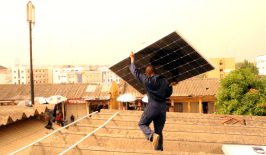The Wuppertal Institute is not alone in noting that “weather extremes are now hitting Europe much harder than climate research could have imagined.” Indeed, hardly anyone is likely to have missed the increasing frequency of burning forests, flooded landscapes and houses torn apart by storms. And in many countries of the Global South, the weather extremes are even more severe. We are already in the midst of climate change – and it is high time to act.
Unfortunately, almost all countries are lagging behind their own climate protection goals. According to Climate Action Tracker, the EU’s effort as a whole is still insufficient to reach their 2030 goals, which includes at least a 55 percent decrease in greenhouse gas emissions.
The good news is that the causes of climate change are known. As are the ways out of the crisis. Research over the past decades has developed concrete paths for transformation. For example, despite current failings, the same Climate Action Tracker suggests 2050 goals are still acceptible.
One of the biggest levers to achieving climate neutrality is to transform the energy industry. Currently, this sector emits the most CO2: the generation of electricity and heating in public power plants and the production of coal and mineral oil products is responsible for more than one-third of total CO2 emissions.
With the “Energy Transition – The Future is Networked” Greenbook, the RESET.org editorial team set out to answer how the transformation towards a climate-neutral energy system can be accelerated. The focus was on digital solutions and technical innovations in the energy sector, as well as new impulses in industry. The Greenbook is part of the “Mission Climate Neutrality” project funded by the Deutsche Bundesstiftung Umwelt (DBU). The key findings are summarised below.
The energy transition – Where do we currently stand?
Wind, sun, biomass and water are already vital sources of energy; their share of electricity consumption rose from just 6.5 percent in 2000 to 41.1 percent in 2021.
In a report by the Öko-Institut, the authors assume that the energy sector could actually achieve its sectoral target for the climate measures agreed in the coalition agreement for 2030 (unfortunately, other major sectors such as transport, industry, and buildings are not on pace to do so). However, this is only possible if the coal phase-out succeeds by then, renewable energies are massively, immediately expanded and the price of CO2 increases within the European Emissions Trading System.
We should not forget, however, that electricity consumption will likely continue to rise in the coming years as mobility and other sectors gradually convert to electricity.
Hope for an accelerated expansion of renewable energies in the coming years is not only raised by the fact that electricity generation from wind and solar energy is becoming increasingly cost-effective but also because existing technologies are constantly developing further. Examples include development breakthroughs in the production of hydrogen, energy generation from waste heat, and the field of agro-photovoltaics.
Hydrogen
Hydrogen is crucial for a climate-neutral energy system. It will be indispensable in some areas of basic material production, heavy-duty and air transport, energy storage, and as a non-fossil chemical raw material. For this, hydrogen must be available in time and in the required quantities.
In addition, various new storage technologies have emerged in recent years. Efficient and cost-effective storage is an essential building block for the transformation of our energy system, as the yield from solar and wind energy fluctuates. Storage helps meet electricity demand by storing power when there is a surplus and releasing it when there is a lull. Which technologies will prevail remains to be seen. This article gives an overview of different storage options.
Finally, grid intelligence and efficiency are essential aspects of independence from fossil fuels. An energy system that is fed by renewable energies means an increasing decentralisation of energy sources and the participation of a growing number of actors in the market. The resulting increase in the complexity of the energy system requires new control and regulation mechanisms; load flows and grids must be intelligently controlled while consumption must be reduced through greater efficiency. This is precisely where digital technologies are an important prerequisite for a successful energy transition.
Smart grids are key to accelerating the transition
New, intelligent measurement and communication technologies are needed for the increasingly complex energy system of the future, in which more and more small and medium-sized renewable energy systems are being integrated. The goal is to build a “smart grid” within which not only energy but also data is transported, enabling grid operators to obtain and evaluate information on electricity production, transport, storage and consumption in real-time and subsequently control electricity flows. Such an intelligent electricity network would be supported by algorithms and other digital tools.
But intelligence in the energy system also means making consumption more flexible. “This is a relatively new idea, that consumers no longer simply continue to consume linearly but consume more when there is more electricity available and less when less electricity is produced,” says Severin Beucker, co-founder of the Borderstep Institute for Innovation and Sustainability. This means, for example, charging an electric car or generating hot water in a house when wind and solar energy production is at full speed or at night when the overall energy level is low.
“This is digitalisation because all we need is finely distributed intelligence. I need to know when how much energy is needed where and when a lot of energy is produced where. This supply and demand has to be coordinated.”
However, intelligent networking also makes it possible to move electricity back and forth between different actors or sectors, in what is called “sector coupling.”
What the intelligent, climate-neutral neighbourhood of the future may look like is being tested, for example, on the former Pfaff factory site. Here, green roofs with photovoltaics (PV) and building-integrated solar panels on façades and in public spaces are to generate a large share of the energy required on site. Furthermore, decentralised lithium-ion batteries inside buildings and a central redox flow battery ensure the use of locally produced electricity. At the same time, all sectors are interconnected so that electricity and heat can flow between the different producers and consumers – solar systems, heat pumps, electricity storage, electric cars and households. All electricity consumption meters and other power components are connected via an electric smart grid to a data network. Meanwhile, electricity and heat are distributed and locally optimised via a digital energy management system.
Digital technologies can also facilitate peer-to-peer trading and energy sharing in small and medium-sized energy communities, be they tenants’ associations, local networks of solar plant operators and consumers, or entire villages. The main priority here is to find solutions for trading electricity between the different “cells”. These energy communities can find their digital model in virtual power plants (VPP), for example. Essentially, the central control room of large, fossil-fuel power plants is reproduced for this purpose through the use of software. In addition to energy trading, balancing and demand management – adjusting the amount of electricity generated so it aligns with demand – VPPs can be used to combine current consumption data with weather and forecast information to enable precise grid control and planning.
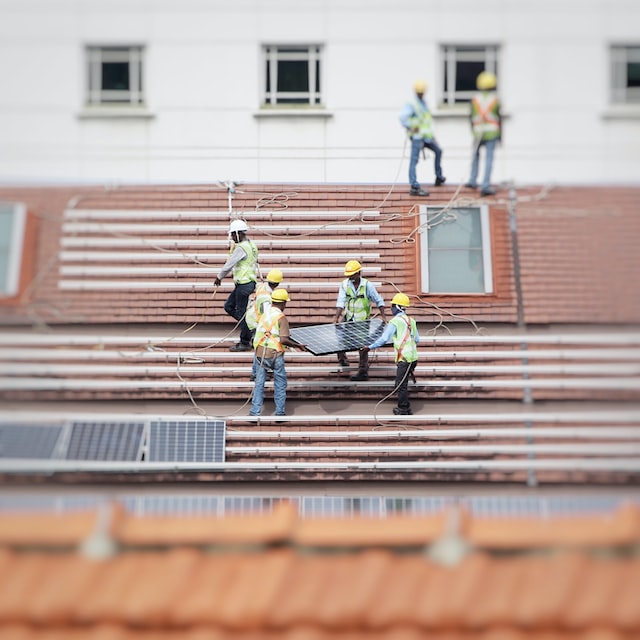
Energy-Sharing
Citizen participation in the energy transition can not only significantly accelerate the transformation but also increases its acceptance. The concept of energy sharing is a promising one: citizens participate in wind or solar power plants in their neighborhood and receive the electricity they produce at a discount. According to an analysis by the IÖW, over 90% of all households in Germany could be supplied with energy-sharing electricity. However, existing structures make it difficult to establish energy communities. The EU has already anchored energy sharing in the Renewable Energy Directive in 2019, and the regulatory framework is long overdue in many nations.
Even if pilot projects like the Pfaff Quarter and various approaches to virtual power plants hint at solutions, the essential prerequisites for smart, decentralised grids and the integration and flexibilisation of all actors have not yet been implemented on a broad scale. We are still at the beginning of digitalising energy grids – transformers and transformer stations, for example – including at the household and community level. Alas, digital measuring devices such as smart meters are only now being gradually installed.
Efficiency: The best watt is the one that doesn’t need to be generated
At the same time, efficiency is an important aspect of a successful transition to 100 percent renewable energy. “We always think we will solve the problems by making everything renewable. But we are starting from far too much consumption. There also very limited land and opportunities for renewables,” says Beucker. If the energy transition is to be implemented quickly, it is also a matter of using less energy overall. Only if we cut back by 50 percent by 2050 is a complete switch to renewable energies at all realistic (Prognos, Öko-Institut, Wuppertal-Institut 2020).
An important step towards increasing efficiency in the energy industry is a grid expansion that is oriented towards actual demand. That is, we must build lines, transformers, and substations in such a way that they optimally supply an area. Among other things, simulations of an energy grid or an energy community can help to plan the infrastructure with precision. One example of this is PowerTAC. The open-source project uses machine learning for simulations and forecasts to better understand how the complex energy market is designed.
In addition, it is indispensable to identify energy-saving potentials and to optimise all processes through intelligent control. An important first step is to analyse the system, i.e. to check how much energy is consumed and for what. The interdisciplinary team at Etalytics, for example, has developed sophisticated software based on artificial intelligence for this purpose. Numerous sensors within the energy systems – this can be a heating or cooling system in a company or a production line in an industrial plant – permanently collect information about the productivity and the condition of the systems. Etalytics’ AI brings this data together and then calculates in real time how the operating strategy within the systems can be optimised so that as little energy as possible needs to be expended. Finally, the optimised data is converted into actionable steps. In addition to increasing energy efficiency, Etalytics can also optimise the systems to increase energy flexibility.
In one data centre, Etalytics’ smart software was able to save 50 percent of the energy used to cool the servers (which accounts for the majority of data centres’ energy needs). The start-up’s intelligent software could also be used in building complexes, at energy suppliers, and in the “smart cities” of the future.
Resource efficiency in industry 4.0
In the search for solutions to decarbonise the energy sector, industry is the elephant in the room. Currently, around 27 percent of the EU’s total energy consumption – with primary energy consumption even higher – is attributable to industry. The chemical industry in particular, but also the metal and mineral oil industries, are especially power-hungry. This has to do with the many energy-intensive thermal processes in operation, like when large quantities of raw materials or intermediate products are heated or cooled to a high degree.
Grischa Beier, who conducts research on Industry 4.0 at the Institute for Advanced Sustainability Studies (IASS) in Potsdam, Germany, sees progress in the development of combining thermal processes with the existing weaknesses of renewable energies. First and foremost, this includes their fluctuating yields. Heating processes, for example, are used to store energy. “When metallic materials need to be heated, you can heat the slag more than is actually necessary when there is a lot of renewable electricity in the energy system. So you can then let the metal cool for a certain period of time when energy is scarce.” At the same time, research is being conducted into how energy-intensive processes can become more resource-efficient. New processes in the cement industry are one example.
Digital technology is used in industry primarily when it comes to how products can be manufactured with as little energy and other resources as possible. There are different approaches to this, such as improved maintainability and better support through intelligent software, which should ultimately save material.
At the same time, there are also many possibilities to adjust production processes to the amount of energy available in the grid at a given time – so-called ‘demand response management’. “At times when a lot of renewable energy is available due to sun and wind, production is increased. On the other hand, production processes can be shut down at times when energy is scarce. In this way, less energy is wasted and the available energy is used optimally,” says Beier. How such intelligent control can be implemented has already been demonstrated by Etalytics’ software.
Even if less for climate protection reasons and mostly to optimise processes and maximise profits, industry has become more efficient, according to Beier: “The consumption of energy remains relatively constant over the years, although the output – that is, what is produced – is actually increasing. The conclusion for me is that the processes are becoming more efficient.” What part digitalisation or Industry 4.0 plays in this is a question that has not yet been conclusively clarified in research. What is clear, however, is that the industry’s CO2 emissions are still too high and, in addition to the switch to renewable energies, further massive increases in efficiency are necessary. Great opportunities lie in the circular economy.
A circular economy for a regenerative industry
The core idea of the circular economy is to keep resources in a closed cycle for as long as possible. Discarded products, their components, or the recycled raw materials thus become the starting point for new products. In industry, in particular, closed cycles can ensure that fewer raw materials are added from the outset and fewer new products are produced. The EIBA and DIBIChain projects show how digital technologies can support this.
Whether a product can be recycled or reprocessed or has to be disposed of depends on its type and specific condition. To do this, it is necessary to clarify what a product is made from and what of it is still usable. Currently, this process is complicated and time-consuming. This is mainly because little information is provided on the products and identifying individual components is often difficult. In the EIBA project, an AI is being developed that identifies old parts so that they can be recognised more quickly and recycled more easily. For this purpose, sensor-based data and other information are evaluated with the help of artificial intelligence and formulated into a decision recommendation. Currently, the system is being trained on used vehicle parts, but in the future, the EIBA technology will also be available as an app so that the “old parts detector” can also be used by small companies and workshops or private individuals without special hardware.
The starting point in the EIBA project is old parts about which no further information is available and which have to be identified afterwards in a time-consuming process. An essential step for the circular economy of the future is to record all relevant product data from the very beginning. Tracking materials, their refinement and processing along the entire supply chain – from the extraction of raw materials to their return to the material cycles – facilitates their recycling. But not only that. Transparent supply chains can also help to implement fair working conditions. The DIBIChain research project is testing a blockchain application for this purpose, in which all participants in a supply chain can enter the data relevant to the lifecycle assessment in encrypted form.
Sufficiency: Enough is enough
However, a climate-neutral industry – as, incidentally, a climate-neutral energy system as a whole – can hardly be achieved with intelligent control and efficient production processes alone. As long as people want to own as much as possible and constant economic growth is the primary goal, more and more must be produced. In turn, CO2 emissions remain high. What is needed is sufficiency, meaning nothing less than a societal change towards consumer behaviour and economic practices that also recognise the concepts of “less” and “enough.” Implementing sufficiency strategies is a responsibility for society as a whole that requires a rethink at the cultural, political, and economic levels.
Sufficiency strategies can certainly be implemented in the use of digital technologies, for example by only digitising where technologies really achieve a sustainable improvement and only collecting as much data as necessary.
The resource and energy demand of digitalisation
Even though many positive examples show that energy consumption can be reduced with the help of digital technologies, there are many cases in which the savings don’t compensate for the energy consumption of their development and use. Alas, digital technologies are also energy-hungry. Every process that is digitised first requires material – sensors, processors, data lines – and energy for programming, training, and operation.
Researchers have calculated, for example, that training an AI produces about as much CO2 as five cars over their entire life cycle. In this case, the figures were calculated for a fairly complex speech recognition AI and are likely to be relatively high. Nevertheless, they give an impression of AI’s energy-intensiveness.
The production and disposal of the hardware of digital infrastructures also contribute to the significant footprint of digitalisation. For example, if we compare a modern metering system (IMS) (without a smart meter gateway) with a classic Ferraris meter (the current meter model in households), the production of an IMS causes 91 kg of CO2 equivalents while a Ferraris meter is around 8 kg of CO2 equivalents. In addition, the electricity consumption in the operation of an IMS increases as soon as a smart meter gateway is added.
Data centres are the bottleneck of digitalisation as this is where all data flows are ultimately processed. EU data centres currently use around 2.7 percent of the bloc’s energy, but this varies greatly by country. Ireland, for example, data centres could account for 23 percent of the whole country’s energy demands by 2030.
When assessing the impact of digital technologies, it is therefore always necessary to take a close look at the relationship between resource and energy expenditure in the production and use phase, as well as the actual savings in a system overall.
Digitisation as a basic prerequisite for a rapid energy transition
Digital technologies are considered “enablers” of the rapid expansion of renewable energies, as a study by Germanwatch states. They play a key role in finding solutions to the challenges of decentralisation, flexibility, and efficient use of energy, as the innovative research projects and start-ups we have presented illustrate.
Digital technologies can coordinate electricity supply and demand by recording production and consumption in real-time. They create the conditions for energy to be distributed intelligently between producers, consumers, and electricity storage facilities so that the electricity grids remain stable and as little energy as possible goes to waste. They make it possible to exchange energy across sector boundaries and enable consumers to react to variable supply tariffs.
In this way, digital technologies can contribute to an energy system that makes the best possible use of the energy provided by renewable energies with intelligence and flexibility while balancing out peaks and lulls and reducing consumption through efficiency. Fossil energy sources such as coal and gas become dispensable in such an energy system.
In addition, an intelligently networked energy world offers the opportunity to establish new business models beyond the big players of the energy market and to initiate democratisation processes. Good examples are peer-to-peer trading and energy-sharing models. Here, new energy communities can supply themselves locally from solar plants and wind turbines in a decentralised manner.
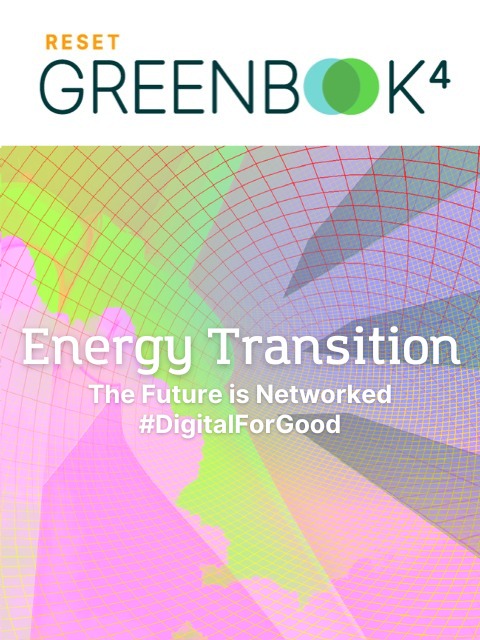
The 1.5 degree target is unattainable without a real transformation of our energy system. But how can it succeed? What are the energy sources of the future? What digital solutions are ready and where are innovations needed? And how can the transformation be driven forward?
The RESET Greenbook “Energy Transition – The Future is Networked” presents digital, innovative solutions and sheds light on the background.
However, an intelligent and efficient energy system is far from being a reality. At the moment, mainly small areas are being digitised; there is no continuous exchange across the entire energy system. This means that the potential for advancing the energy transition with the help of digital technologies is currently still far greater than the acceptance and demand on the part of the population, companies, and industry.
It can be assumed that the large energy companies will drive the digitalisation of the grid, as they themselves have an interest in controlling the data and intelligence. However, in order to avoid data monopolies, to enable as many actors as possible to participate in the energy market, and to guarantee a high level of data protection, this development should not be left to the energy industry alone.
In addition, digital technologies create important prerequisites for the energy transition. But the fact that they actually contribute to greater efficiency and reduce electricity consumption is not a foregone conclusion. The production of hardware, programming – and in the case of applications based on artificial intelligence, training – as well as the operation of digital technologies also require considerable amounts of energy and resources. Today, the production and use of digital devices and services already accounts for 8 to 10 percent of global electricity demand. Various scenarios predict a further usage-related increase of 50 to 80 percent by 2030.
The energy transition 4.0 needs a clear framework
An important prerequisite for a speedy energy transition is to facilitate the production of renewable energies and their decentralised exchange. This requires the creation of appropriate framework conditions at the political level, including the removal of bureaucratic hurdles for the establishment of renewable energy communities, the promotion of regional renewable energy power plants to support municipal grids, the flexibilisation of energy tariffs to link consumption to the availability of renewable electricity, and the promotion of citizen participation and co-design to increase acceptance.
In addition, the technical infrastructure must be created so that a networked, intelligent, and efficient energy system can be developed. This includes, among other things, the digitalisation of energy grids and the installation of intelligent meters (smart meters), especially for large consumers. Smart meters can determine consumption data at regular intervals, transmit it automatically, and manage access rights. By connecting energy suppliers, consumer devices, and the electricity grid, they form an important interface for the control of decentralised electricity generators such as photovoltaic or wind energy plants, but also for the organisation of energy communities. In addition, smart meters can be used to introduce flexible electricity tariffs that take into account price fluctuations and electricity demand.
On the other hand, it is important to make digitisation itself sustainable and to keep climate and resource protection, data protection, and social justice in mind. This requires an appropriate political framework and guardrails:
- Data protection: Comprehensive data protection guarantees that only necessary data is collected, transmitted, and stored.
- Data sufficiency: Since the storage and transfer of data consumes energy, devices such as smart meters and other software should be used as sparingly as possible.
- Sustainable hardware and software: Various measures can oblige manufacturers to keep energy and resource consumption in the production, programming, and operation of software and hardware as low as possible and to comply with fair working conditions in the supply chain.
- Recycling/ circular economy: Appropriate guidelines must provide for end-of-life or second-life management in which products and raw materials are reused.
- Green data centres: With appropriate requirements, data centres can be obliged to switch to 100 percent green electricity.
Such actively designed digitalisation can contribute to the successful decarbonisation of our energy system by 2050. Effective supply chain legislation and measures such as the digital product passport and the Blue Angel for data centres and software, as laid out in the BMU’s Digital Agenda and already being implemented in some cases, are the first important steps on this path. Still, they are far from sufficient.
